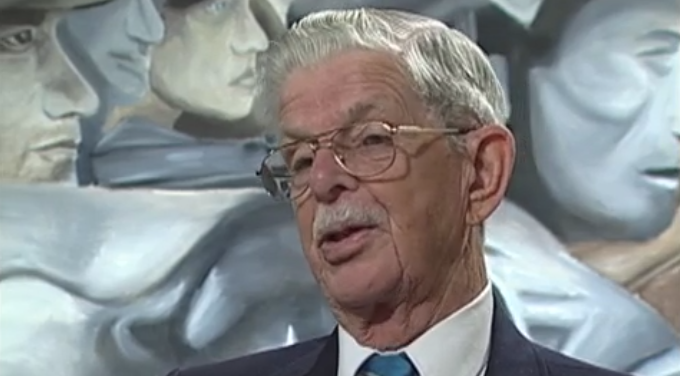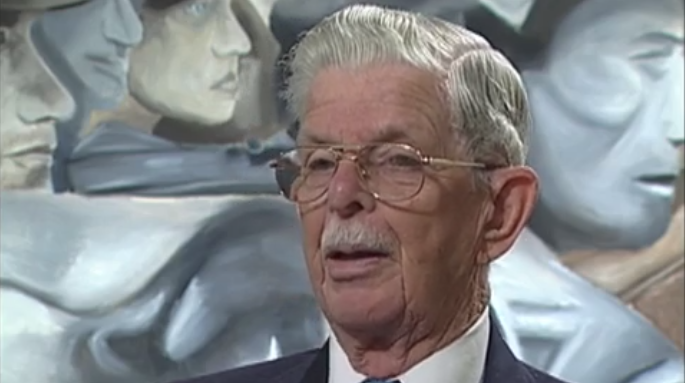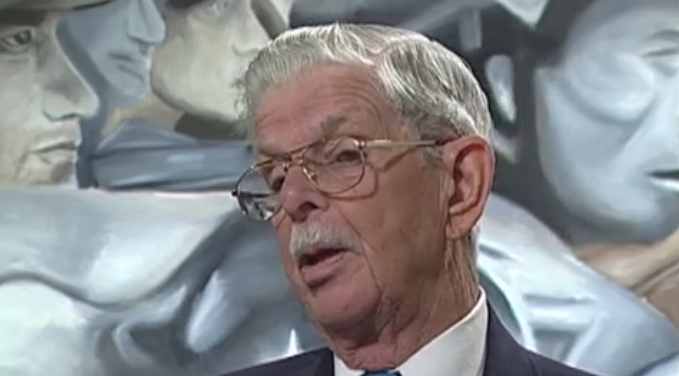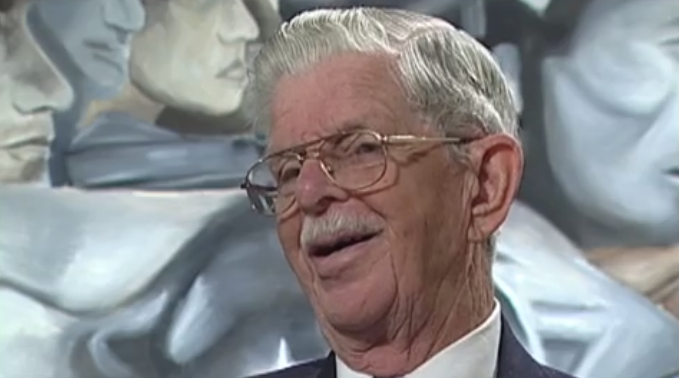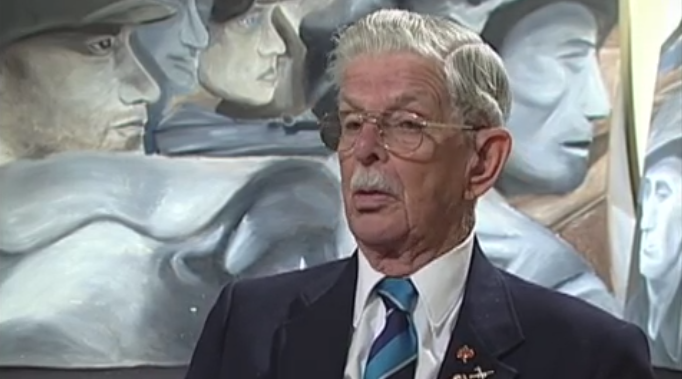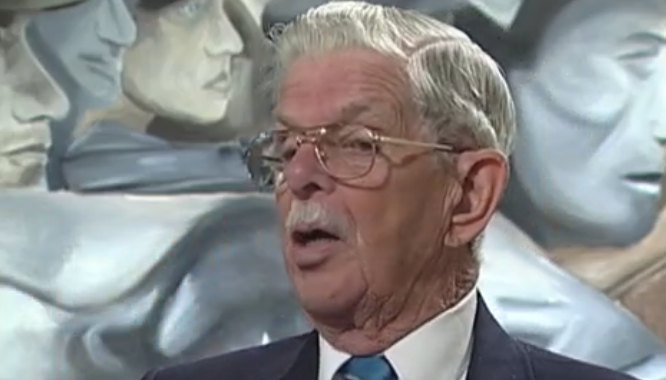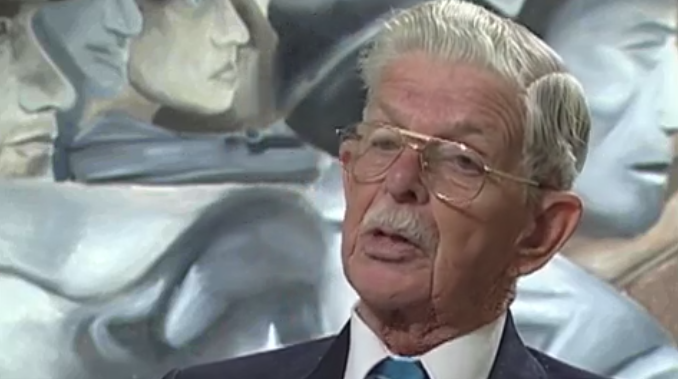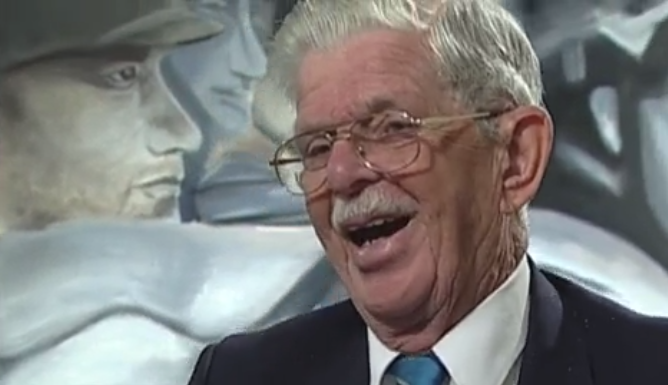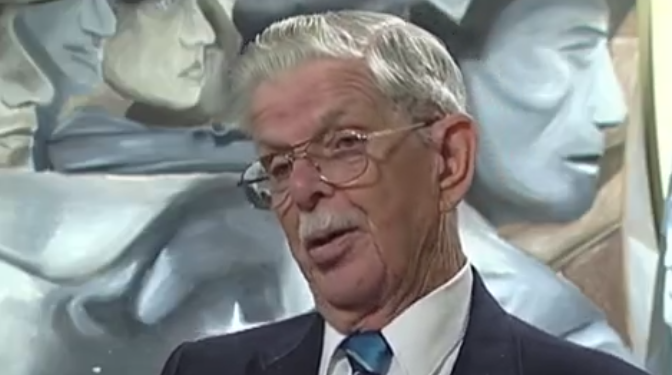An attack on a U-boat is a pretty, pretty serious and pretty
dangerous matter. First of all the radar man picks up a contact
which he identifies as a possible U-boat. The next thing that
happened, and that might be twenty, twenty-five miles away, as
far as thirty-five miles away, but more likely twenty-five miles
And the first thing that happens is the pilot first opens the
bomb doors, navigator lowers the lee light below the bottom of
the aircraft and the pilot starts descending ‘til he's
flying at fifty feet above the water, and the only reason he can
successfully do that is ‘cause he has a, now he has a radio
indicator for height. So he knows exactly where he is, this
within inches accurately. And so you start tracking the U-boat
or if, you hope it's U-boat, and when you're at a half mile range
you turn the light on, and the second pilot has the controls for
light in the nose of the aircraft and he swings the light around
‘til he has the object illuminated. If it happens to be a U-boat
you're about eight seconds from when you're gonna be at the U-boa
and so you're all set, you do your bombing (inaudible), and you
drop six depth charges. Depth charges are 250 pound and they're
spaced at 100 feet, and they're set to go off at fifty feet below
the surface. And if you have a good string, you're right
alongside the boat, there's no way he's gonna survive. Of course
the other, soon as you turn that light on, you know what's gonna
happen on the U-boat, they're gonna open fire with their
anti-aircraft guns and they can be pretty dangerous. In 1944,
getting on towards the middle part of 1944, almost all U-boats
carried twin 20mm guns on the back end of the conning tower and
then where the old deck gun used to be, they have a quad 20mm gun
located. So you got six barrels firing 20mm shells at an aircraft
it can be pretty lethal. And if you get away with it, you turn of
light and you circle around and it, the minute, just before you
turn the light off, the wireless operator fires a, a photo
cartridge and a picture is taken automatically. Turn off the
light and you circle around and then if the contact is still
there you come in a second time and light it up to see if there'
damage, or whether he's sinking, or whether he's carrying on as
usual and that is provided you're still flying. Our squadron had
twenty-seven aircraft shot down by German U-boats and we
were successful in sinking ten U-boats.



